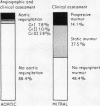Abstract
Ionescu, M. I., Pakrashi, B. C., Mary, D. A. S., Bartek, I. T., and Wooler, G. H. (1974). Thorax, 29, 56-67. Replacement of heart valves with frame-mounted tissue grafts. Between April 1969 and March 1973, 213 patients had heart valve replacement with frame-mounted autologous or homologous fascia lata or with heterologous pericardial grafts. There were 111 single aortic, 95 single mitral, and seven tricuspid valve replacements.
The incidence of hospital and late mortality was each 10% for the entire series and the main causes were myocardial failure and infective endocarditis.
The majority of patients obtained significant symptomatic improvement. In patients with aortic replacement there was a statistically significant reduction in cardiothoracic ratio and in the voltage of the electrocardiogram.
Regurgitant murmurs developed in 11·6% of aortic patients and in 51·6% after mitral replacement (in 37·5% the murmur has not increased in intensity while in 14·1% it has gradually progressed). None of these mitral patients requires reoperation. Grafts in the tricuspid position have not shown signs of dysfunction or failure. Graft failure has not occurred in the aortic replacement series. From the mitral position six grafts have been removed due to failure. All six were made of autologous fascia and all showed varying degrees of thickening and retraction of cusps. There were six episodes of peripheral embolization (five transient) and one left atrial thrombosis. All seven patients are alive. Anticoagulants were not used.
The results of haemodynamic studies and in vitro hydrodynamic experiments are discussed and an explanation for graft dysfunction in the mitral position is presented.
The actuarial analysis of this series of patients over a period of up to 54 months post-operatively has shown encouraging results.
Full text
PDF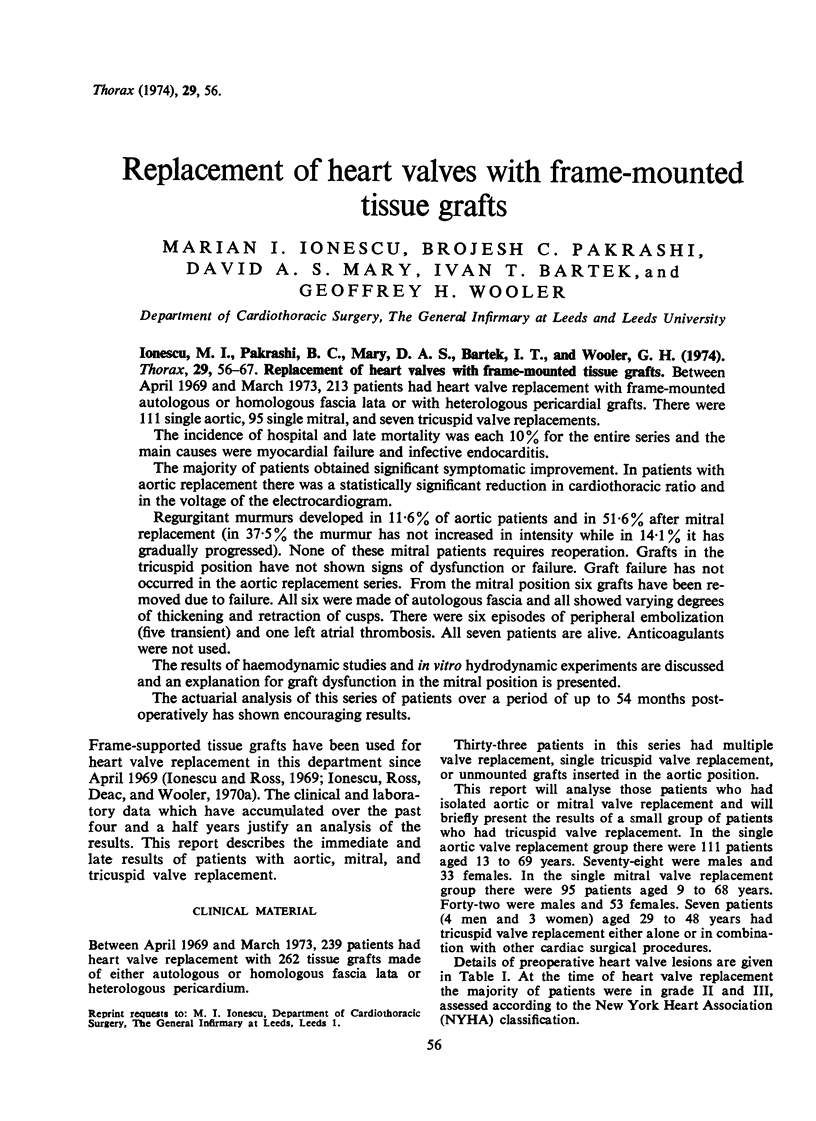

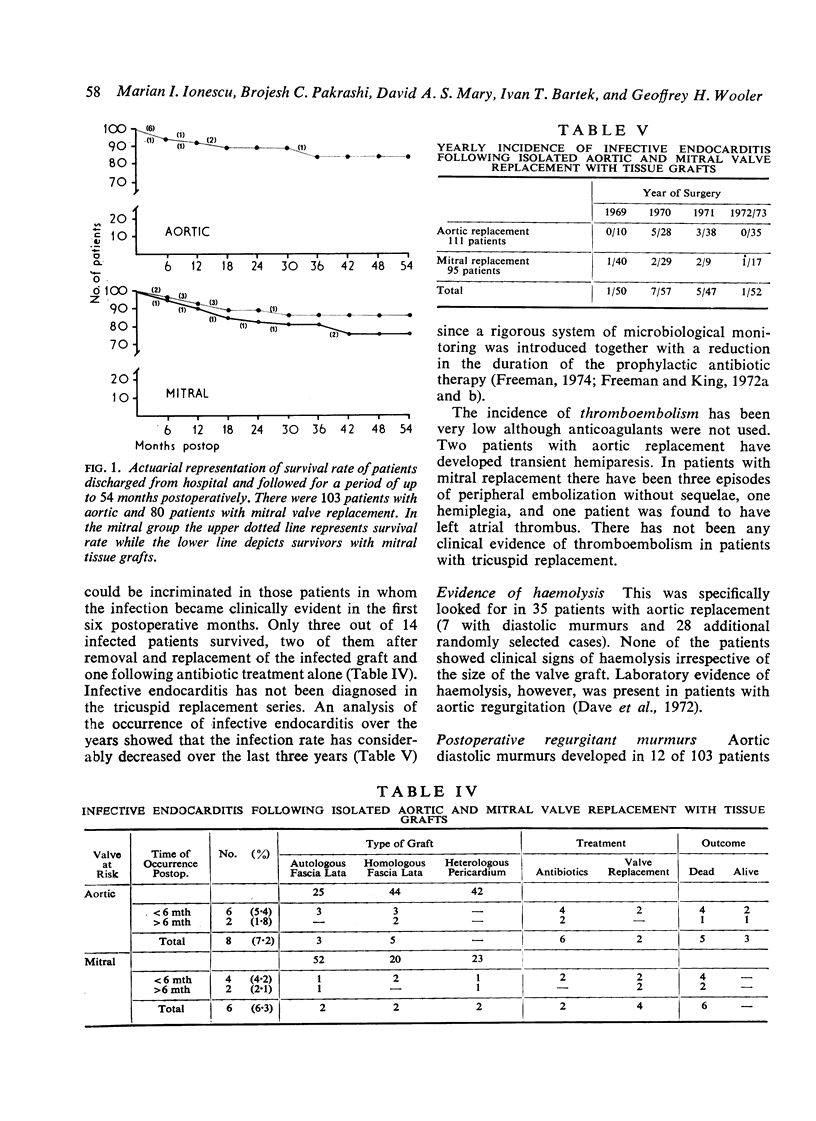
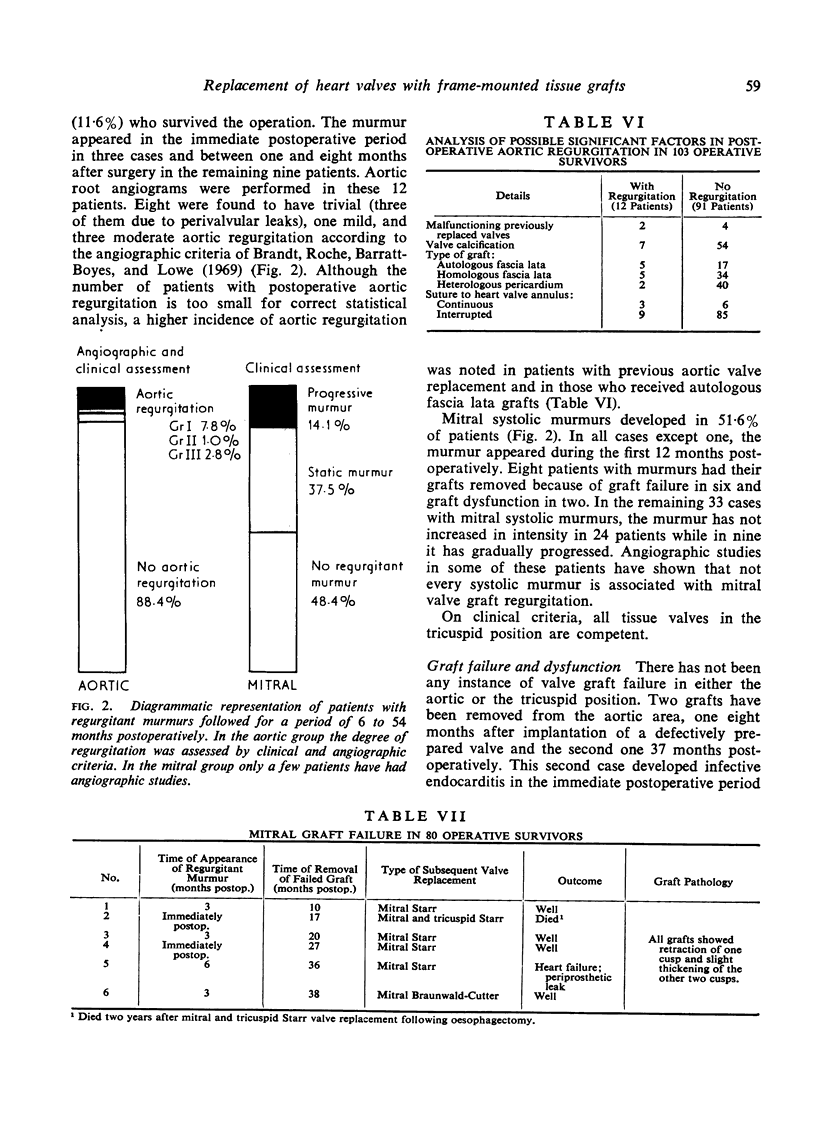
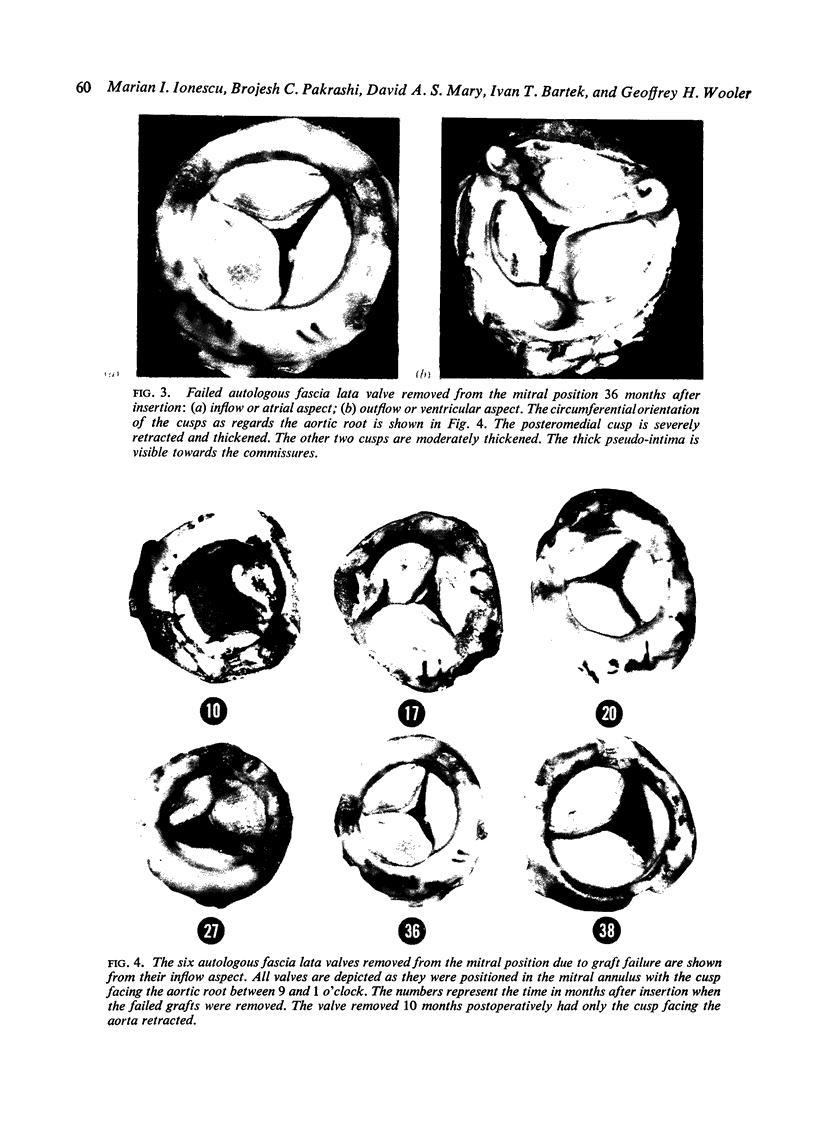
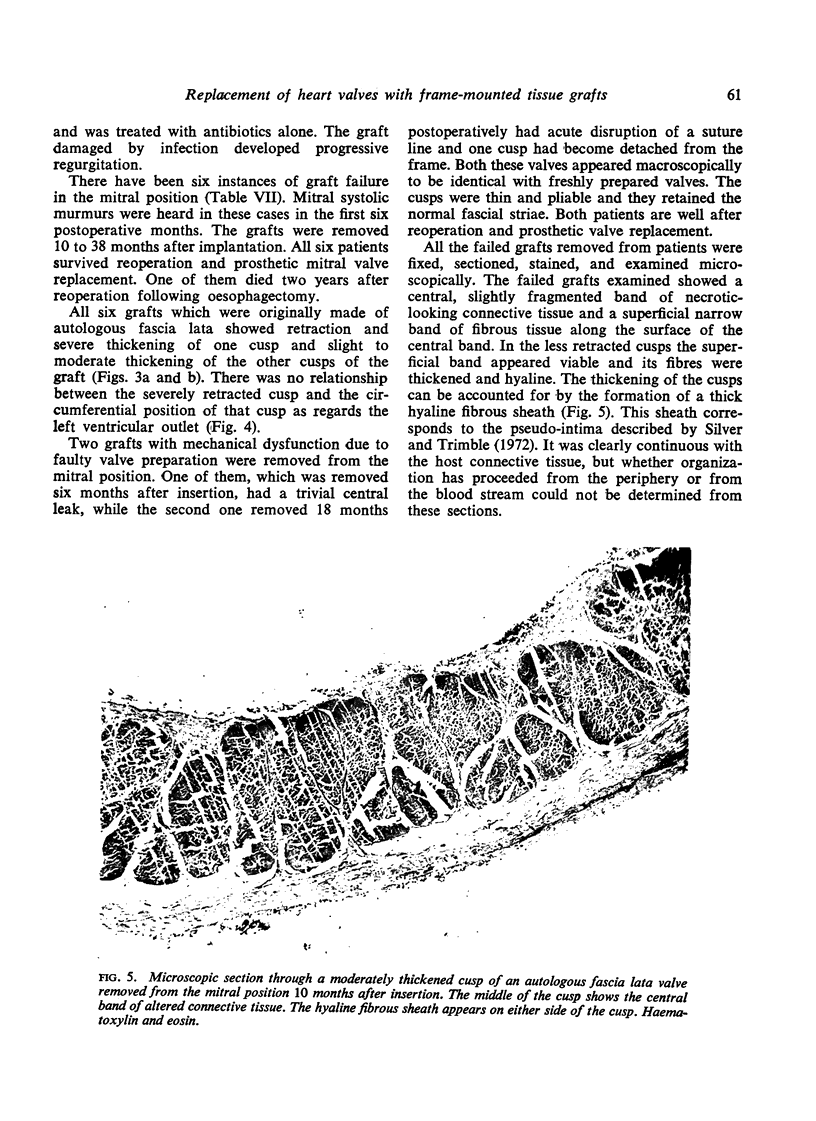
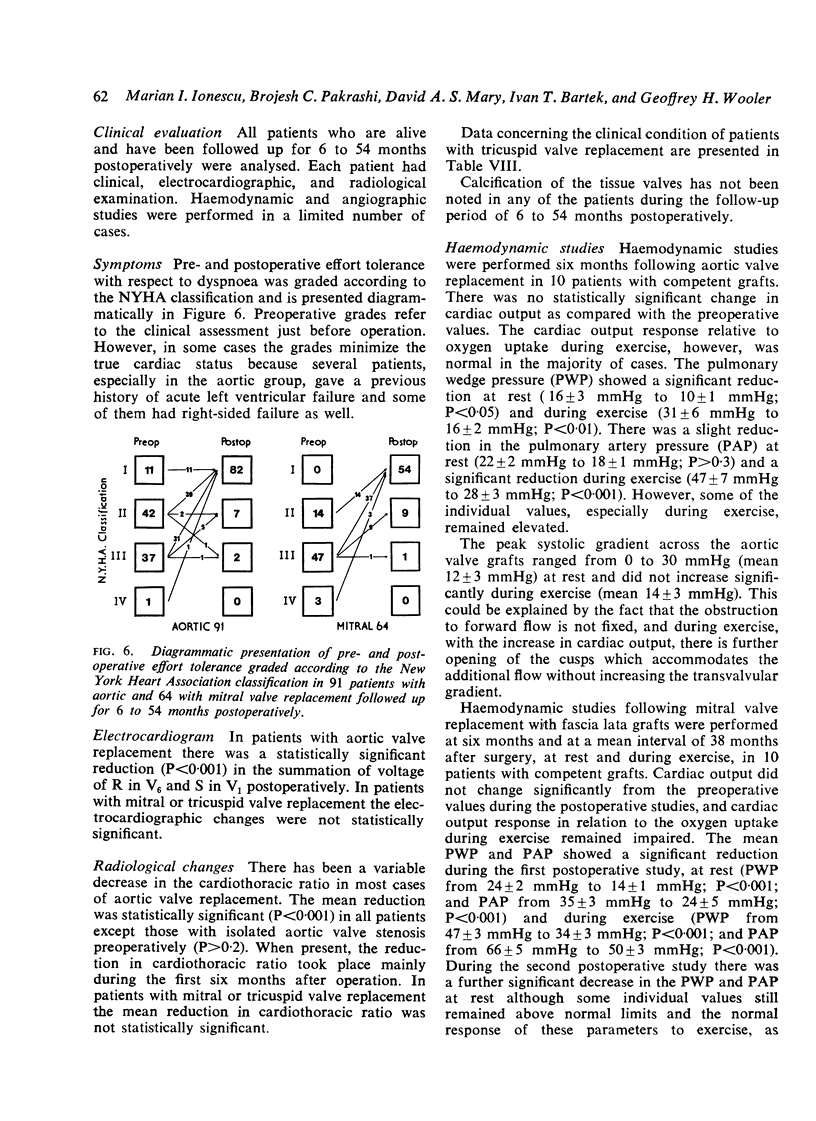
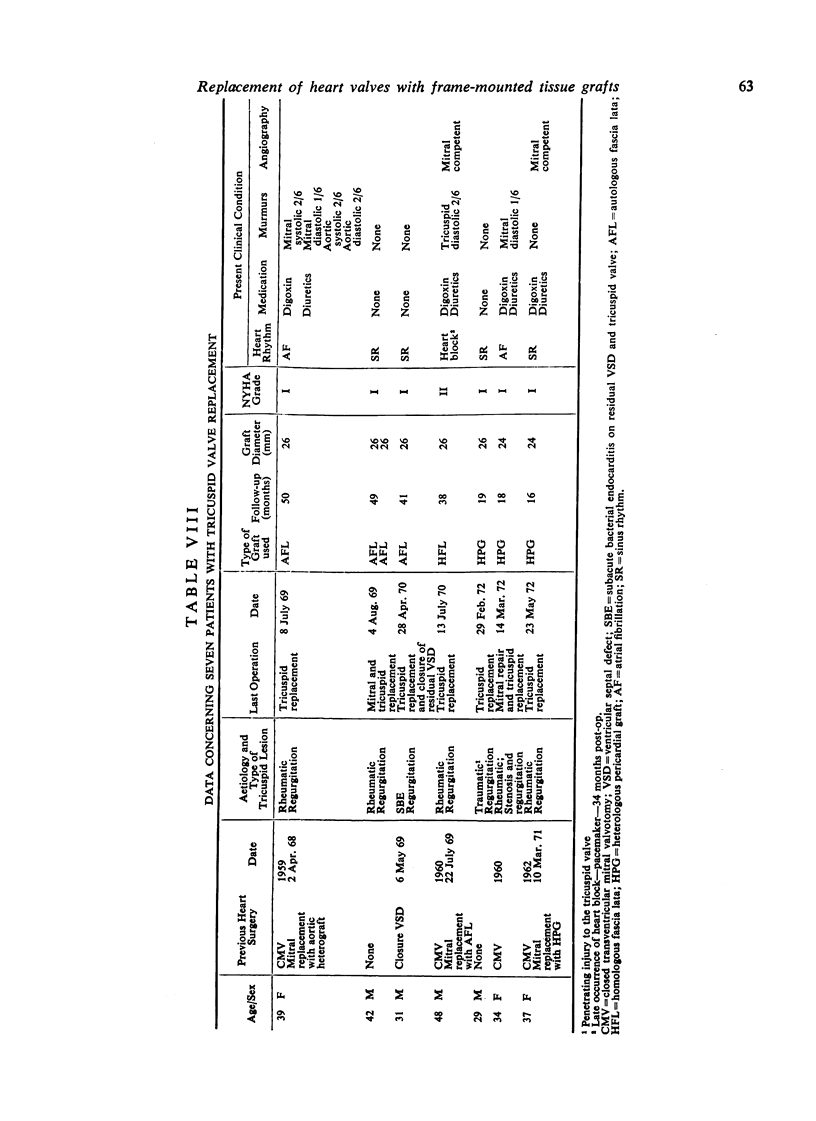
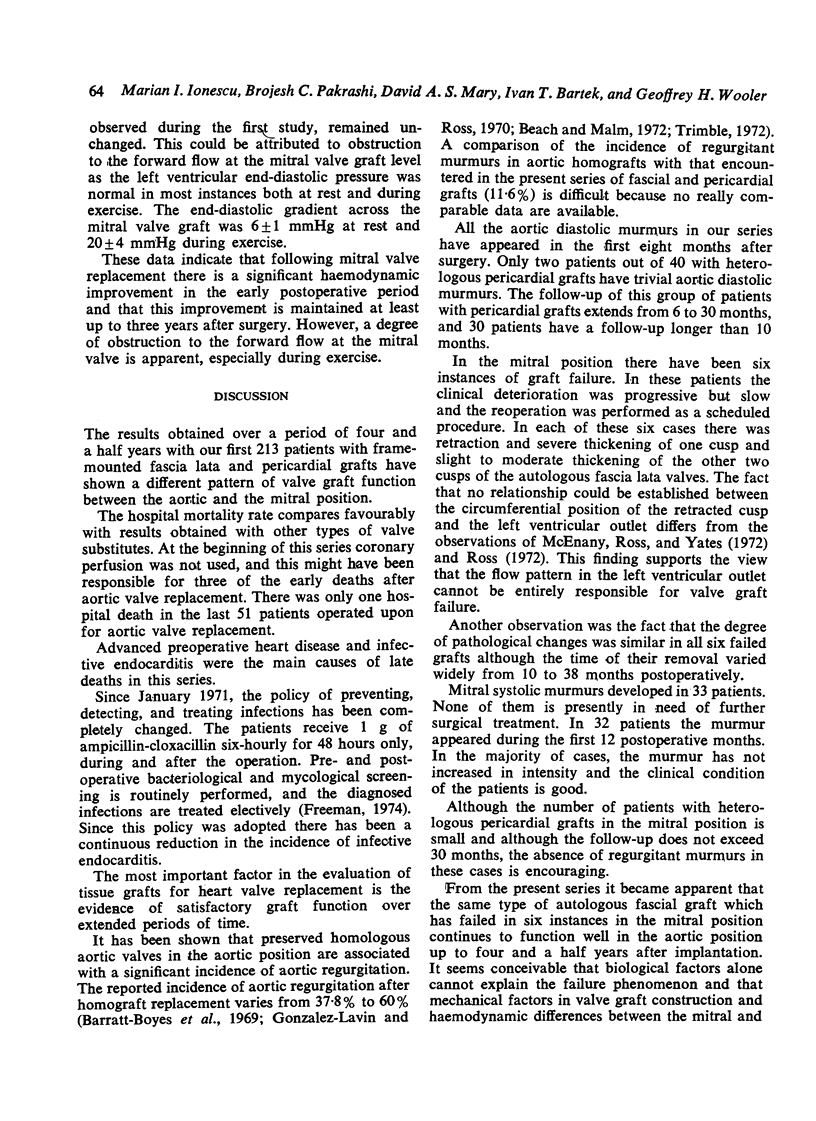
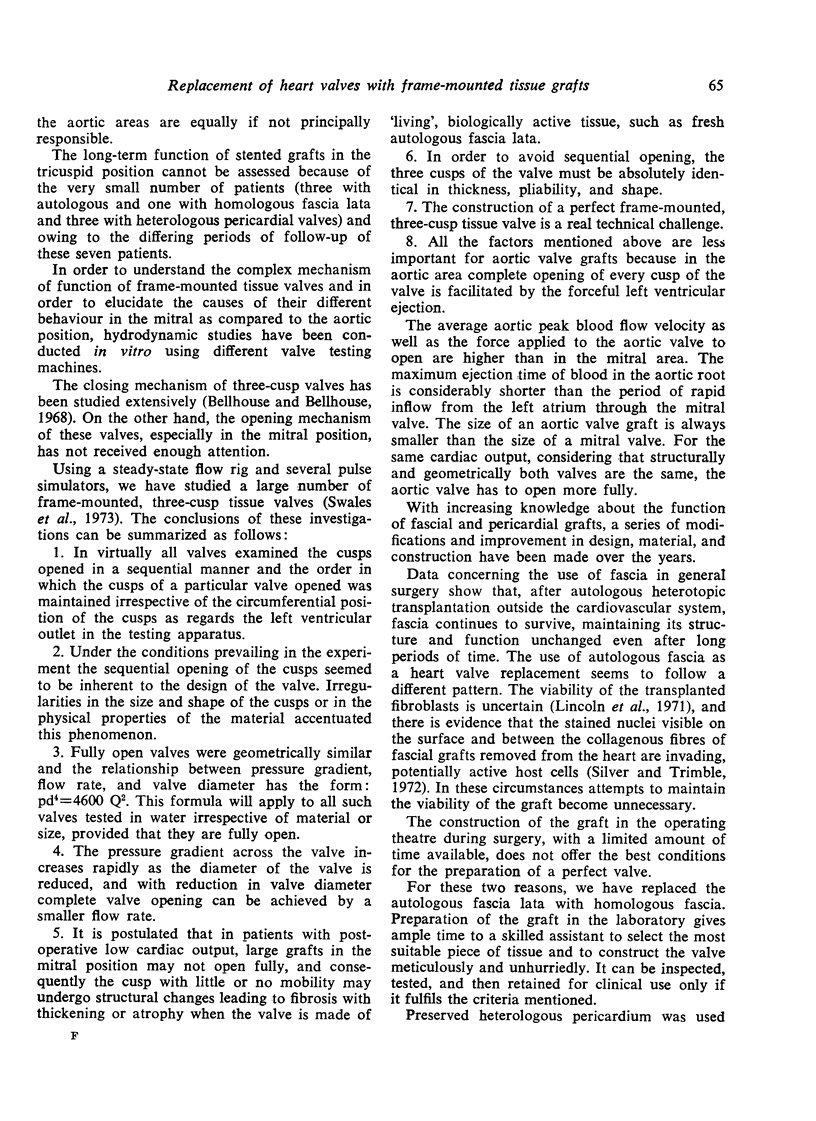
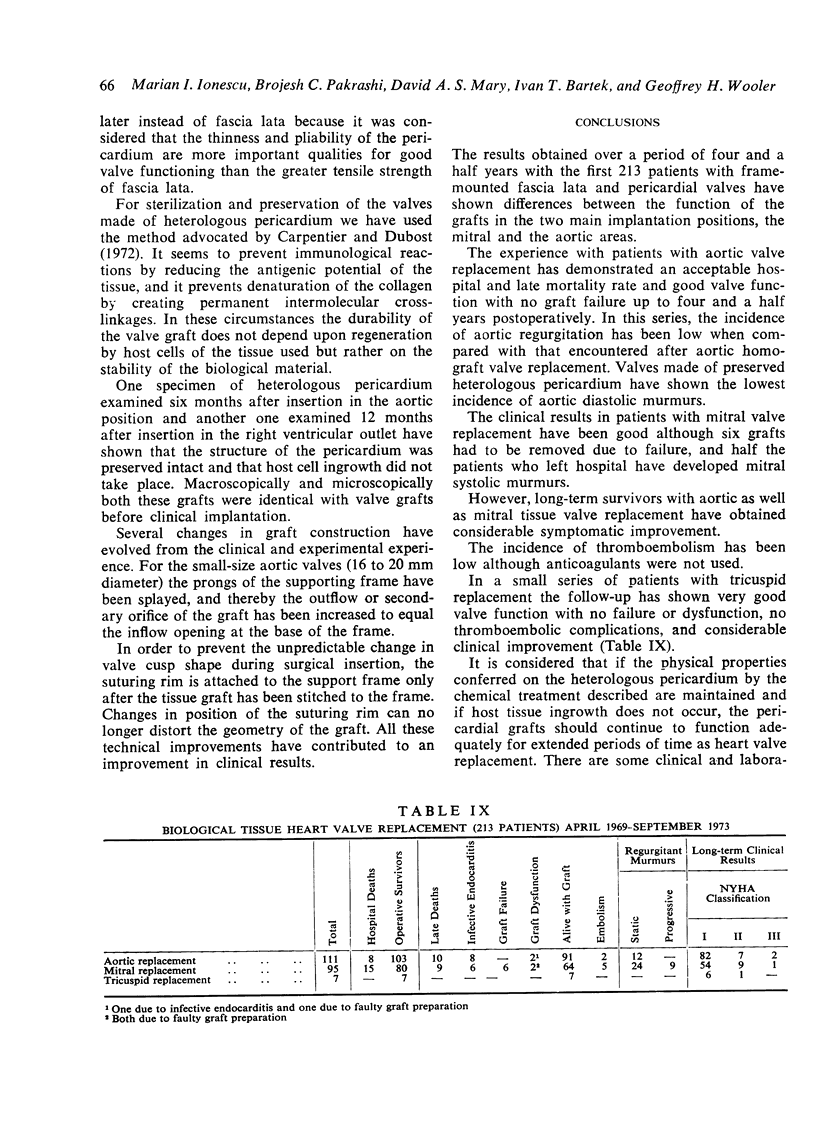
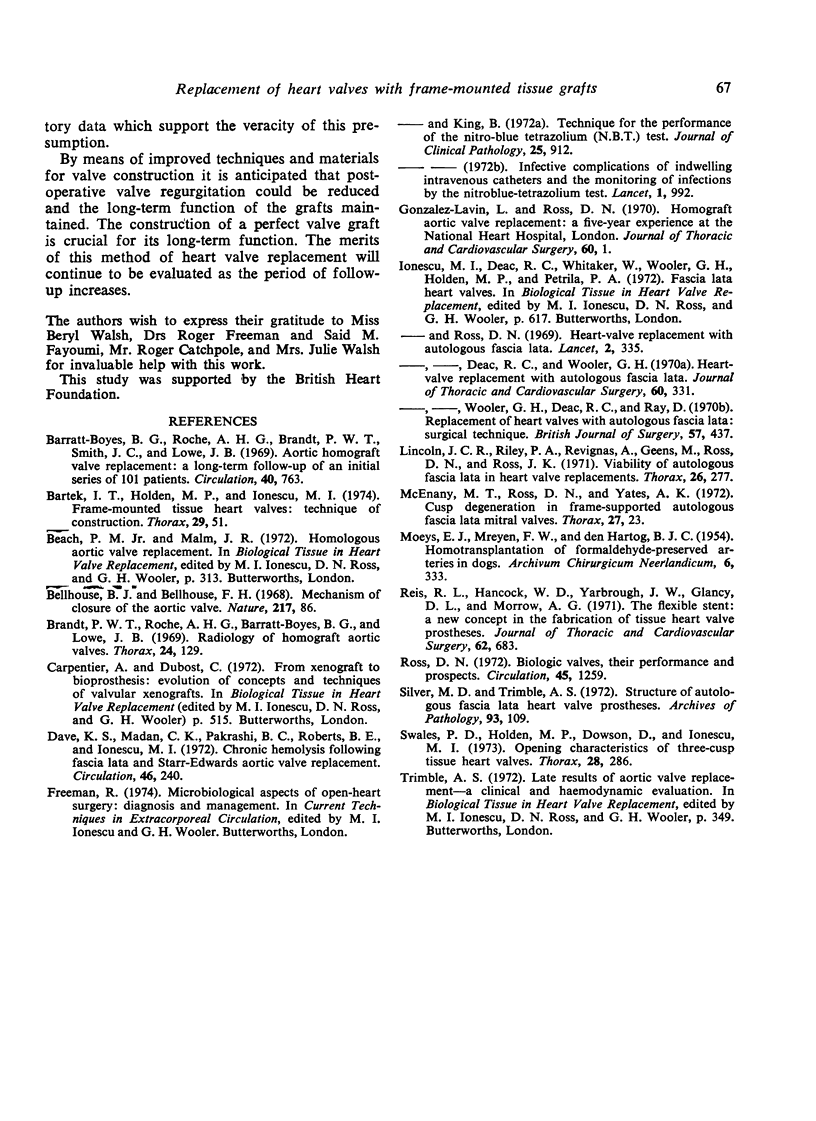
Images in this article
Selected References
These references are in PubMed. This may not be the complete list of references from this article.
- Barratt-Boyes B. G., Roche A. H., Brandt P. W., Smith J. C., Lowe J. B. Aortic homograft valve replacement. A long-term follow-up of an initial series of 101 patients. Circulation. 1969 Dec;40(6):763–775. [PubMed] [Google Scholar]
- Bartek I. T., Holden M. P., Ionescu M. I. Frame-mounted tissue heart valves: technique of construction. Thorax. 1974 Jan;29(1):51–55. doi: 10.1136/thx.29.1.51. [DOI] [PMC free article] [PubMed] [Google Scholar]
- Bellhouse B. J., Bellhouse F. H. Mechanism of closure of the aortic valve. Nature. 1968 Jan 6;217(5123):86–87. doi: 10.1038/217086b0. [DOI] [PubMed] [Google Scholar]
- Brandt P. W., Roche A. H., Barratt-Boyes B. G., Lowe J. B. Radiology of homograft aortic valves. Thorax. 1969 Mar;24(2):129–141. doi: 10.1136/thx.24.2.129. [DOI] [PMC free article] [PubMed] [Google Scholar]
- Dave K. S., Madan C. K., Pakrashi B. C., Roberts B. E., Ionescu M. I. Chronic hemolysis following fascia lata and Starr-Edwards aortic valve replacement. Circulation. 1972 Aug;46(2):240–249. doi: 10.1161/01.cir.46.2.240. [DOI] [PubMed] [Google Scholar]
- Freeman R., King B. Technique for the performance of the nitro-blue tetrazolium (NBT) test. J Clin Pathol. 1972 Oct;25(10):912–914. doi: 10.1136/jcp.25.10.912. [DOI] [PMC free article] [PubMed] [Google Scholar]
- Gonzalez-Lavin L., Ross D. Homograft aortic valve replacement. A five-year experience at the National Heart Hospital, London. J Thorac Cardiovasc Surg. 1970 Jul;60(1):1–12. [PubMed] [Google Scholar]
- Ionescu M. I., Ross D. N., Deac R. C., Wooler G. H. Heart valve replacement with autologous fascia lata. J Thorac Cardiovasc Surg. 1970 Sep;60(3):331–354. [PubMed] [Google Scholar]
- Ionescu M. I., Ross D. N. Heart-valve replacement with autologous fascia lata. Lancet. 1969 Aug 16;2(7616):335–338. doi: 10.1016/s0140-6736(69)92696-8. [DOI] [PubMed] [Google Scholar]
- Ionescu M. I., Ross D. N., Wooler G. H., Deac R., Ray D. Replacement of heart valves with autologous fascia lata. Surgical technique. Br J Surg. 1970 Jun;57(6):437–442. doi: 10.1002/bjs.1800570609. [DOI] [PubMed] [Google Scholar]
- Lincoln J. C., Riley P. A., Revignas A., Geens M., Ross D. N., Ross J. K. Viability of autologous fascia lata in heart valve replacements. Thorax. 1971 May;26(3):277–283. doi: 10.1136/thx.26.3.277. [DOI] [PMC free article] [PubMed] [Google Scholar]
- MOEYS E. J., MREYEN F. W., DEN HARTOG B. J. Homotransplantation of formaldehyde-preserved arteries in dogs; a fundamental study. Arch Chir Neerl. 1954;6(Suppl):333–440. [PubMed] [Google Scholar]
- McEnany M. T., Ross D. N., Yates A. K. Cusp degeneration in frame-supported autologous fascia lata mitral valves. Clinical results in 67 patients. Thorax. 1972 Jan;27(1):23–27. doi: 10.1136/thx.27.1.23. [DOI] [PMC free article] [PubMed] [Google Scholar]
- Reis R. L., Hancock W. D., Yarbrough J. W., Glancy D. L., Morrow A. G. The flexible stent. A new concept in the fabrication of tissue heart valve prostheses. J Thorac Cardiovasc Surg. 1971 Nov;62(5):683–passim. [PubMed] [Google Scholar]
- Ross D. N. Biologic valves. Their performance and prospects. Circulation. 1972 Jun;45(6):1259–1272. doi: 10.1161/01.cir.45.6.1259. [DOI] [PubMed] [Google Scholar]
- Silver M. D., Trimble A. S. Structure of autologous fascia lata heart valve prostheses. Arch Pathol. 1972 Feb;93(2):109–115. [PubMed] [Google Scholar]
- Swales P. D., Holden M. P., Dowson D., Ionescu M. I. Opening characteristics of three-cusp tissue heart valves. Thorax. 1973 May;28(3):286–292. doi: 10.1136/thx.28.3.286. [DOI] [PMC free article] [PubMed] [Google Scholar]



